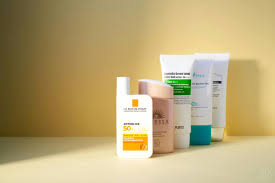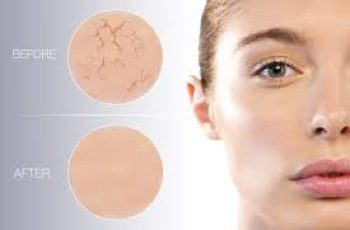
How To Buy a Safe, Effective Sunscreen
Sunscreen is a crucial product that shields your skin from harmful ultraviolet (UV) rays, reducing the risk of sunburn, skin damage, and long-term concerns like skin cancer and premature aging.
UV rays, particularly UVA and UVB, penetrate the skin and cause cellular damage over time, making consistent sunscreen use an essential step in daily skincare for all skin tones and types.
The best sunscreens work by absorbing, scattering, or reflecting UV radiation, preventing it from damaging your skin cells or triggering harmful mutations in the skin’s DNA.
For complete protection, it’s also important to wear protective clothing, seek shade during peak hours, and wear accessories like wide-brimmed hats and UV-blocking sunglasses.
To choose the right sunscreen for your needs, you need to consider several factors—SPF, formula type, ingredients, broad-spectrum protection, water resistance, and your unique skin type and tone.
SPF (Sun Protection Factor)
SPF measures how well a sunscreen protects your skin from UVB rays—the kind that cause sunburn and contribute to skin cancer risk—by comparing exposure time needed for redness with and without sunscreen.
The American Academy of Dermatology (AAD) recommends using sunscreen with at least SPF 30, which blocks around 97% of UVB rays, though no sunscreen blocks 100%.
SPF isn’t about how long you can stay in the sun—it’s about how much solar exposure your skin can tolerate before burning while protected, which varies based on reapplication, time of day, and skin tone.
Higher SPF values offer more protection but must still be reapplied every two hours, especially after sweating or swimming, to maintain their effectiveness throughout the day.
People with fair skin, a history of skin cancer, or sun sensitivity may benefit from using SPF 50 or higher, though higher SPF shouldn’t replace other sun protection practices.
Formula or Type
Sunscreens are available in various forms—lotions, creams, gels, sprays, sticks, and ointments—so it’s important to choose a texture you’re comfortable applying generously and consistently.
Creams tend to be ideal for dry skin and sensitive areas like the face, while gels are better suited to oily or acne-prone skin due to their lightweight, non-greasy feel.
Spray sunscreens are convenient for applying to hard-to-reach areas and kids, though it’s crucial to rub them in and avoid inhaling the product during application.
Stick sunscreens offer precision around sensitive areas such as the eyes, lips, and ears, making them a portable and mess-free option for on-the-go touch-ups.
Avoid sunscreens that combine insect repellent in the same formula, as the AAD recommends using separate products and limiting repellent use to reduce potential irritation.
Ingredients
Read the ingredient list carefully, especially if you have allergies, sensitive skin, or prefer to avoid certain chemicals or fragrances that might trigger a skin reaction.
Chemical sunscreens absorb UV rays and may contain ingredients like avobenzone, oxybenzone, octocrylene, and homosalate, which have raised concerns about allergies and systemic absorption.
Mineral (or physical) sunscreens, which include titanium dioxide and zinc oxide, sit on top of the skin and deflect rays and are often preferred by those with sensitive or reactive skin types.
Some research indicates that chemical sunscreen ingredients may enter the bloodstream and persist longer than previously thought, prompting further investigation into safety.
Though absorption doesn’t automatically mean harm, those concerned about this can opt for mineral sunscreens and avoid known allergens or irritants commonly listed on product labels.
Broad-Spectrum Coverage
Look for sunscreens labeled “broad-spectrum,” which means they protect against both UVA and UVB rays—both of which contribute to skin cancer and premature aging in different ways.
UVA rays penetrate more deeply and are associated with wrinkles, age spots, and photoaging, while UVB rays are the primary cause of sunburn and direct DNA damage.
UVA can even pass through glass, so broad-spectrum sunscreen should be worn indoors near windows and during long car rides to help prevent daily cumulative exposure.
Water Resistance
Water-resistant sunscreens are essential for outdoor activities, swimming, or heavy sweating, as they are formulated to remain effective for 40 to 80 minutes while wet.
No sunscreen is fully waterproof or sweatproof, so reapplication remains necessary after swimming, towel drying, or excessive perspiration to ensure ongoing coverage.
Manufacturers are not allowed to claim their sunscreens are “waterproof,” so products making such claims may not meet FDA regulations and should be approached with caution.
Mineral vs. Chemical
The main difference between mineral and chemical sunscreens lies in how they function: mineral sunscreens block rays, while chemical sunscreens absorb and neutralize them.
Titanium dioxide and zinc oxide are the two primary active ingredients in mineral sunscreens and are recommended for people with allergies or sensitivity to common sunscreen chemicals.
Chemical sunscreens typically spread more easily and blend invisibly into the skin, but some users may experience stinging or breakouts depending on formulation and individual skin needs.
Hybrid sunscreens may combine both mineral and chemical actives, allowing users to benefit from both technologies—read labels to understand what your product contains.
Skin Type
People with dry skin should look for sunscreens that include added moisturizers like hyaluronic acid, glycerin, or ceramides to help lock in hydration while offering sun protection.
If your skin is oily or acne-prone, choose an oil-free, non-comedogenic sunscreen to avoid clogged pores and breakouts, especially on the face and upper back.
Sensitive skin types benefit most from fragrance-free, alcohol-free, and hypoallergenic formulas that reduce the risk of redness, itching, or flare-ups from irritants.
There are even sunscreens tailored for mature skin that target concerns like fine lines, firmness, and hydration while maintaining full-spectrum UV protection.
Skin Tone
Fair-skinned individuals are more prone to sunburn and are at higher risk of UV damage and skin cancer, so higher SPF and frequent reapplication are critical.
Darker skin tones may be less likely to burn but are more vulnerable to hyperpigmentation and photoaging, particularly from UVA rays, which can be prevented with daily sunscreen.
Tinted mineral sunscreens can help reduce white cast on deeper skin tones and also provide added protection against visible light that may contribute to pigmentation.
Indoor exposure to UVA rays through windows still poses risks, making sunscreen essential even for those who spend most of the day inside or driving.
Application Tips
Apply sunscreen at least 15 minutes before sun exposure to give the ingredients time to activate and bond with your skin’s surface for optimal protection.
Use about one ounce—or enough to fill a shot glass—for full-body coverage, and don’t forget areas like your ears, neck, lips, feet, scalp part, and the back of your hands.
Reapply sunscreen every two hours or immediately after swimming, sweating, or towel drying—even water-resistant formulas require consistent reapplication to stay effective.
Use sunscreen daily, rain or shine, because up to 80% of UV rays can penetrate cloud cover, exposing your skin to potential damage even on overcast days.
Spray sunscreen users should ensure visible coverage and rub the product in afterward; avoid inhalation by spraying in well-ventilated areas and not near the face or mouth.
Always check the product’s expiration date before use—most sunscreens last about three years, but using expired sunscreen can lead to reduced effectiveness and unexpected sunburns.
Final Takeaway
The best sunscreen is the one you’ll wear daily—look for SPF 30 or higher, broad-spectrum coverage, and a formula that suits your skin’s needs, preferences, and sensitivities.
When in doubt, consult with a board-certified dermatologist who can recommend sun protection tailored to your individual health, habits, and skin goals.
By choosing your sunscreen wisely and applying it correctly, you’ll be protecting your skin’s health and beauty for years to come.


